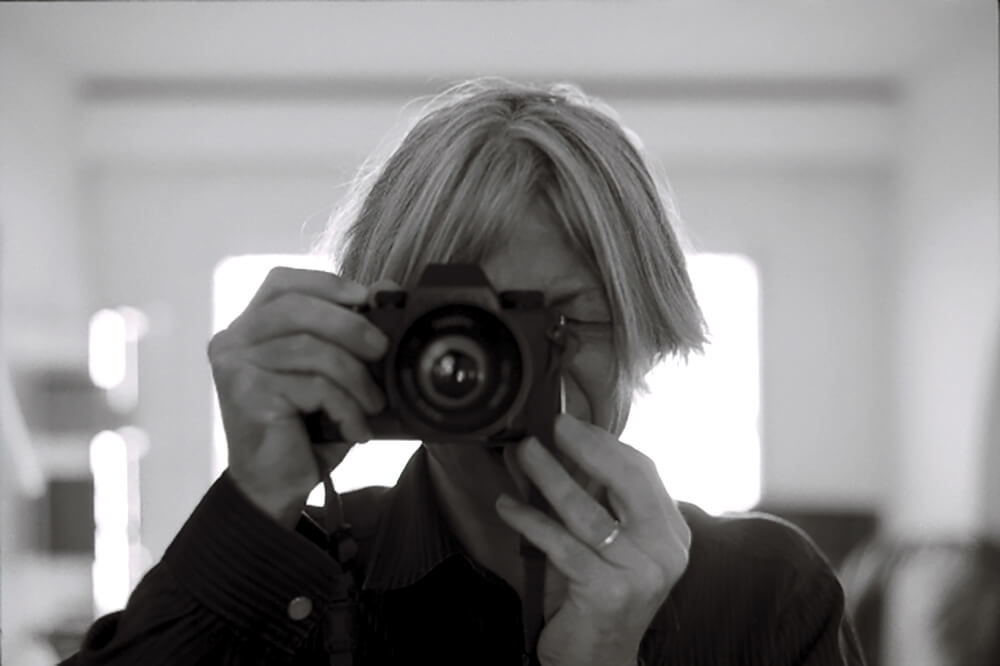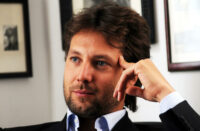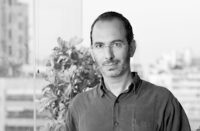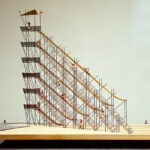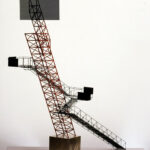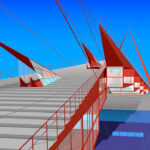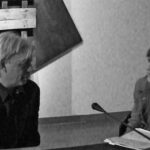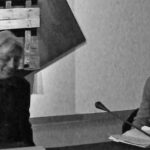ArchiTravel interviews the architect, curator and artist Yuri Avvakumov from Russia.
Interview by : Maria Anagnostou
Maria Anagnostou: You seem to be a world traveller. What is the importance of architectural tourism?
Yuri Avvakumov: I was born in the Soviet Union, behind the Iron Curtain, in a country where people were deprived of freedom of movement. I started travelling the world when I was in my thirties. Of course, a new world opened up for me. And it was different from the world I could see in movies or read about in books. It was a material world that could be seen, heard, felt, smelled. You could feel its volume, spatiality. Without state barriers and political boundaries. And it’s also an experience of the past, because many spaces were created by other people, sometimes from a very long time ago, sometimes you can feel their greatness.
M.A.: What is the importance of travelling, especially for architects, and humans in general?
Y.A.: First of all, it’s a sense of freedom. Because when you’re free, your eyes are wide open. Not just because you don’t have to think about visas and permits, but because you can go beyond stereotypes. When, say, classical architecture (we’re talking about architecture?) will be not only in Greece, but also in China, India, Mexico… Everyone will have their own classics. When many centers and many cultures will open up. And a lot of roads.
M.A.: What do you think is the added value that architecture creates within a city?
Y.A.: Three-quarters of what is built in the world is built without the participation of an architect. Maybe more. Therefore, the role of the architect in the construction of the world is not as important as many of us think. In principle, people can live without architects. Not without architecture, but they will cope quite well without architects. Therefore, from my point of view, the architect first has to realise the beauty of a world built without them. And only then try to add something of their own. Because a beautiful space is not necessarily an architectural space.
M.A.: You have taken part in a lot of international exhibitions and have represented Russia twice in the Art and Architecture Biennale in Venice. What is the importance of architectural events worldwide? What are the profits for a city holding such kind of major events?
Y.A.: Architecture in Venice is like the Olympic Games. So, it’s not a question of whether or not to take part. We should take part in the Venice Biennale because it’s an opportunity not only to show your work and to get some critical attention, but also to meet people and to get a feel for what is new in architecture and what are the doubts, what are the problems and to get it not only through magazines and journalists, but to get it kind of straight.
M.A.: You have introduced and re-introduced the term “Paper Architecture” to describe the genre of conceptual design in the USSR OF THE 1980s. What exactly is “Paper Architecture”?
Y.A.: Paper Architecture is design not intended for realisation. Of course, such design is different from that involving economic resources and technical capabilities. Those who design without going beyond a piece of paper create their own worlds, free from other people’s obligations. However, Paper Architecture remained in the last century, because everything has long been designed on computers, not on paper.
M.A.: You have also created the “Utopian Foundation”, where a large installation is exhibited since 2000. How would you describe the “Utopian Foundation” and which are its actions?
Y.A.: This organisation was totally utopian. It was created and registered in the Ministry of Justice, after which it did not do anything at all. This lasted ten years until a paper came from the Ministry of Justice announcing that the Utopia Foundation should be closed due to a lack of activity. And it was closed. And that’s it.
M.A.: In 2002-3, you curated 36 architectural photography exhibitions, titled “Photophogram 24”. How would you describe the relationship between the art of photography and architecture? It is said that many buildings nowadays are designed in a way to look good in photographs, so that they can be promoted. Is that true in a way?
Y.A.: Yes, there was a program of 36 exhibitions, which I curated and which involved architects, artists and photographers. The program was dedicated to the city, not architectural photography. Architectural photography is really very commercial, and I was interested in the inclusion of architecture in urban life, as one of its components together with people, weather, sky, light, time… The participants were from Moscow and St. Petersburg, New York and Ghent, but they all depicted life in Russia. Of the 24 photographs presented at each exhibition, four remained in the museum. And what else should a Moscow museum collect if not evidence of Russian life?
M.A.: Russia is a country with great history. Designing a modern building within this context is a complex procedure. Is critical regionalism an approach to contemporary Russian architecture?
Y.A.: Russia is the country that led world architecture a hundred years ago. The boundaries of architecture were then thoroughly expanded, the way the metropolis expands at the expense of the provinces. Moreover, what had been the provinces moved to the center. And it happened that way all over the world. But now Russia is a province again, and there is no question of expanding the borders. Seventy years of isolation from world architecture has not been in vain.
M.A.: Is the urban environment of Russian cities satisfactory for the people who live in it?
Y.A.: Russia is a huge northern country with a difficult climate. Cities built in the USSR are basically monocities, built to solve production or military problems. People’s needs, the comfort of living in them were in last place. Although there are changes in the appearance of cities, and there are many of them, one should remember that the Russian city always has the genetic code of a Potemkin village. In first place are not the needs of the person but the appearance of their habitat.
M.A.: At the end, can you please provide your personal proposal for 10 buildings which you think as the most important worldwide that someone must visit anyway?
Y.A.: Wow! Let’s better list the architects: Phidias, Isidore of Miletus, Andrea Palladio, Le Corbusier, Konstantin Melnikov, Mies van der Rohe, Gunnar Asplund, Louis Kahn, Frank Lloyd Wright, Carlo Scarpa…
More on : Yuri Avvakumov
About this Author : Maria Anagnostou
Work of Yuri Avvakumov
Interview Backstage

